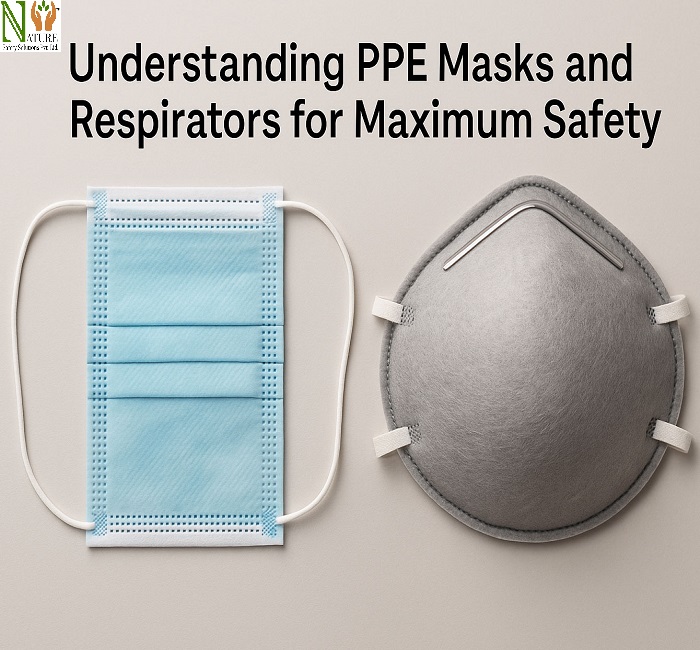Masks and respirators are essential components of PPE kits, designed to protect the respiratory system from harmful particles, infectious agents, and toxic fumes. While they may look similar, masks and respirators serve different purposes. Masks are mainly used for blocking large droplets and splashes, while respirators provide advanced filtration for fine airborne particles, offering higher protection in hazardous environments.

PPE Masks and Their Uses
Masks are lightweight and comfortable, making them ideal for general use. Surgical masks, which are disposable, are commonly used by medical professionals to block large respiratory droplets.
Cloth masks are reusable and designed for everyday wear, but they provide limited protection. Procedural masks, similar to surgical masks, are used in laboratories and clean environments. Masks are loose-fitting and primarily effective for low-risk tasks or preventing the spread of infections.
Respirators and Their Features
Respirators are designed to provide superior protection by filtering out both large and microscopic airborne particles. They form a tight seal around the nose and mouth, ensuring that all inhaled air passes through the filter.
N95 respirators, for example, block at least 95% of harmful particles, while FFP2 and FFP3 respirators meet similar international safety standards. In industrial environments, reusable respirators with replaceable filters are used to protect against dust, fumes, and toxic chemicals.
Key Differences Between Masks and Respirators
The main difference lies in their design and level of protection. Masks are loose-fitting and mainly protect against large droplets and splashes. Respirators, on the other hand, provide a snug fit and filter out fine particles, making them ideal for high-risk settings such as hospitals, construction sites, or chemical plants. While masks are suitable for everyday use, respirators are essential when dealing with highly contagious diseases or hazardous materials.
Care, Maintenance, and Safety
Proper care ensures the effectiveness of both masks and respirators. Disposable masks should be replaced after every use, while cloth masks should be washed thoroughly.
Reusable respirators require regular cleaning of the facepiece and timely replacement of filters. Storing them in a clean, dry place prevents contamination and damage. Choosing the right protective gear based on the environment and maintaining it properly is key to ensuring maximum safety.
Also read:-
